Australian Electromod: Tesla-batteried 1965 Ford Cortina Mk1
Keeping classic cars alive is expensive. They’re often unreliable, leaky, rusty, brittle and slow. Spare parts are usually hard to find, and experts who can fix them are diminishing and pricey.
Before I suck all the joy from old car ownership, we can’t forget the unbridled joy they bring. They look cool, are often more involving to drive than modern equivalents and can skyrocket in value if you’re lucky.
Want the latest EV news and reviews delivered to your inbox? Subscribe to our weekly newsletter!
But what if you could eradicate most of the negatives? There’s something of a global movement happening with electrifying classics, and wheels are turning apace right here in Australia. Exhibit A: Tim Harrison’s sublime 1965 Ford Cortina Mk1 “electromod” which silently cruises Brisbane’s streets.
Gone is the classic’s 1500cc four-cylinder and in its place a US-sourced Netgain HyPer9 AC electric motor, good for 100kW and 235Nm of torque.
A wrecked Tesla Model X provided battery modules totalling 31kWh to power this old Ford, with a CHAdeMo charging port fitted (where the exhaust pipe used to be) for DC fast charging.
The old fuel filler position now has a Type 1 AC socket for home charging, giving zero-to-100 percent charge in around 10 hours. A public DC fast charger does the job in around 60 minutes, and Tim can bank on a range of around 180-kilometres with a full battery.
With a 0-100km/h time of around 7.5-seconds and top speed over 130km/h, this electromod Ford would outrun even the iconic Lotus Cortina of the era, and thoroughly trounce the Ford-powered family sedan.
Tim’s electric Cortina is practically silent and offers the same impressive off-the-line shove experienced in modern EVs. All that torque arrives from first squeeze of the throttle, and its finished weight of just 1007kg – only 100kg over an original Cortina Mk1 – makes it dramatically lighter than most EVs on the market.
“There’s always traditionalists and purists who don’t believe any old car should be touched, and I agree with them to a degree,” Tim said. “Valuable and rare collectible cars should be maintained for their historical value, but there are a raft load of classics waiting to be resurrected which otherwise wouldn’t be on the road. These are the ones I want to bring back and be enjoyed.”
Tim said one of his goals was to make this conversion totally reversible. There are no modifications to the Cortina’s original body and no welding or cutting. The only compromise needed was to remove the original fuel tank from under the boot floor (won’t be needing that anyway) to house the high voltage components.
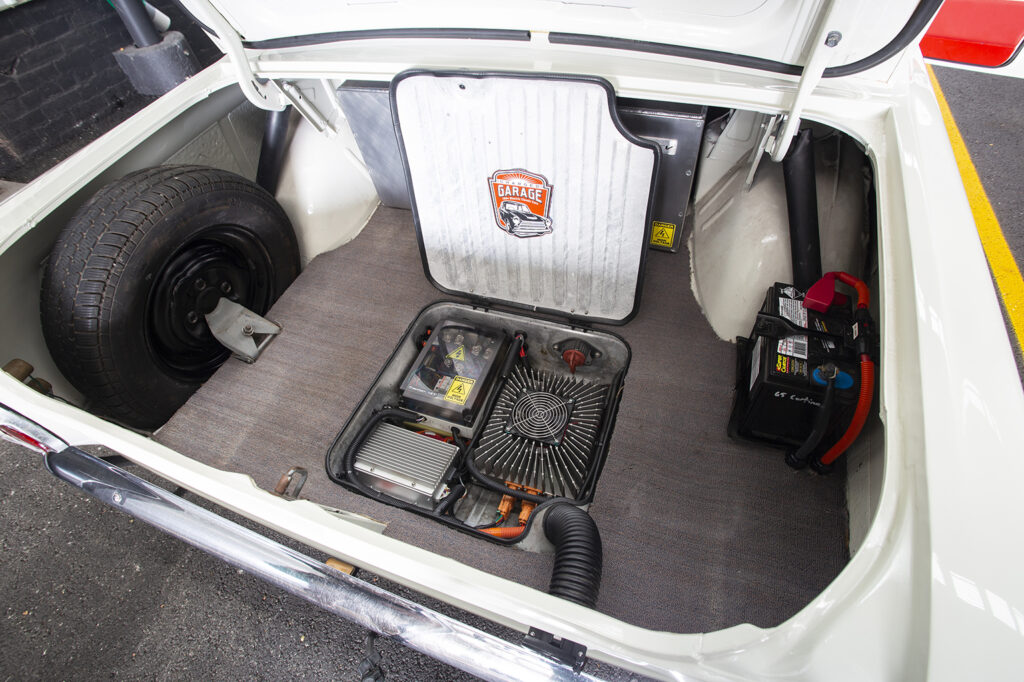
It’s a flush job and it means the boot still has its as-standard capacity. “I didn’t want it to be compromised as a car,” said Tim. “I needed it to fit luggage, and be safe enough for our two kids. We’ve fitted modern seatbelts and two child seat anchor points.”
Imperative for a Queensland summer, a high voltage compressor runs off the main battery pack to work the electric air conditioning.
The strawberries and cream interior is a retro treat of bench seats, painted metal dash and huge original Cortina steering wheel. An Android head-unit screen is a required modern compromise – mounted just above the long-throw manual gear-shifter – and it runs Torque Pro, giving a suite of digital gauges to show the likes of power, rpm, regeneration kW, amps, motor temp, battery temp and inverter temp.
A lovely touch is repurposing the Cortina’s original analogue fuel gauge. This has been converted to display battery capacity instead, ideal if the digital head-unit is being used in audio display mode.

There’s a switch just beside the over-sized steering wheel to control regenerative braking. You can simply select Hi, Lo, or Off depending on your drive.
Tim has his finger on the pulse regarding electric motoring advances in Australia – his day job is with fast charging station provider Evie Networks. “I’ve always like old cars – I’ve owned a 1971 Valiant VG Hardtop and a 1960 Holden FB Wagon – but now I work with EVs I really appreciate their drivetrains, efficiency and the thrill of them,” he said. “That said, I’m not necessarily taken with all the new EVs on the market.”
The rise of electromodding convinced Tim to get back into the old car scene. While he had seen a few converted VW Beetles and Morris Minors, the Ford Cortina Mk1 “was a good challenge as nobody had done one before,” he said. “It’s a lightweight car with a cult following, can be hotted up and taken on the track, and the Lotus history is really interesting.”
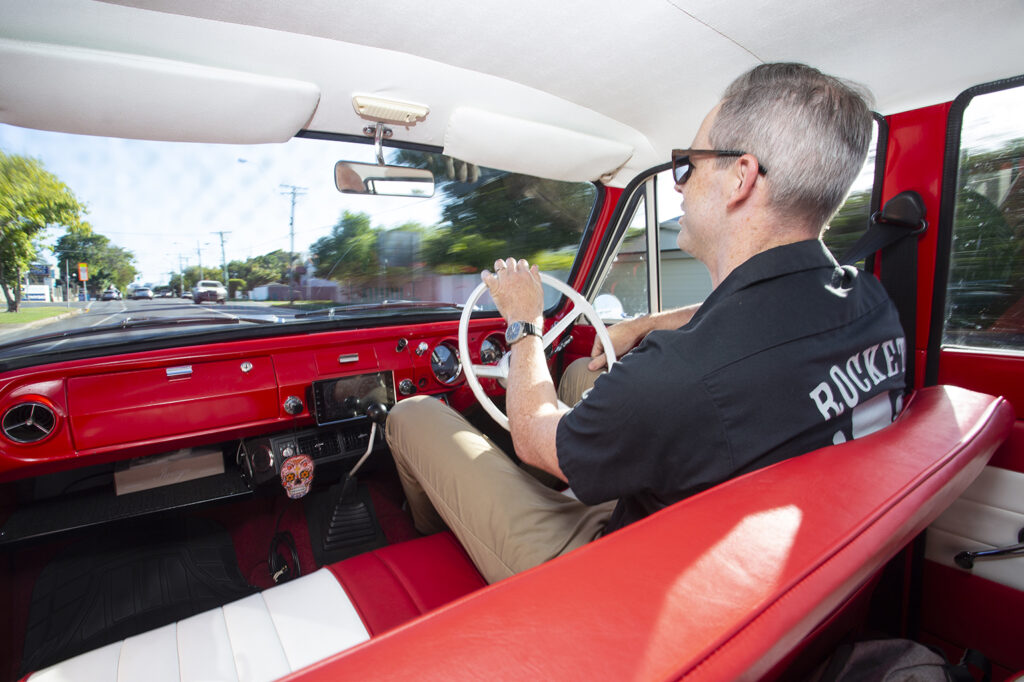
He found an unfinished project which had a good body but poor motor. “It wasn’t running well at all, and when I test drove it around the block the clutch died,” Tim said.
He first bought a wrecked 2011 Mitsubishi iMiEV in the hope he could do a direct transplant, but was thwarted by “software limitations and modern OEM controls on the ECU and drive unit.” Instead he used Netgain in the USA for its off-the-shelf HyPer9 motor, an on-board charging system and battery management system.
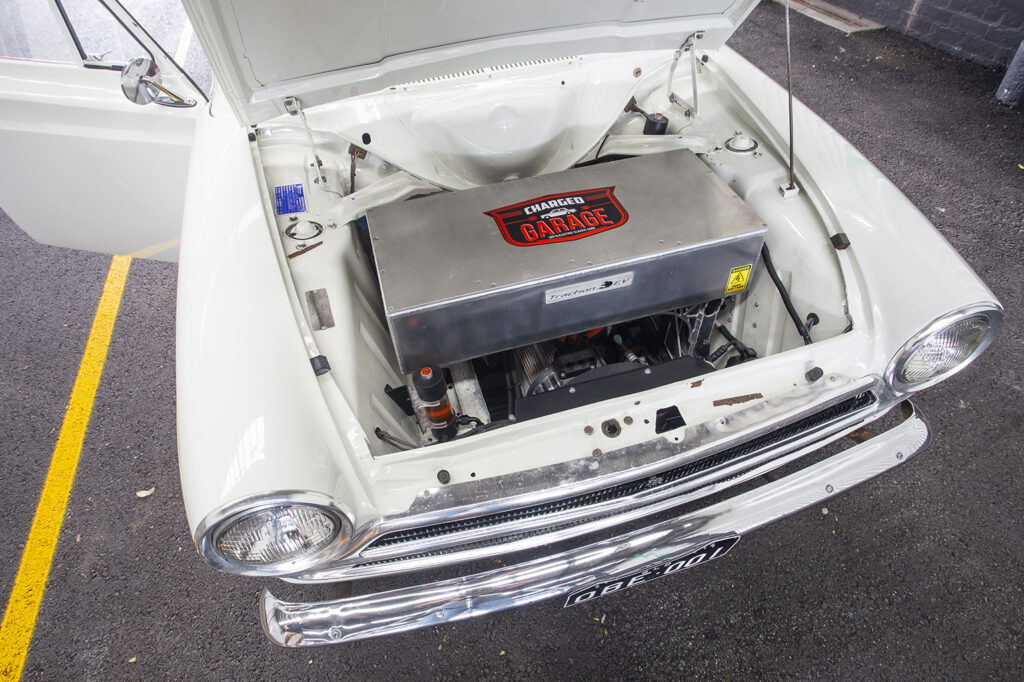
“I then upped the ante and found a written-off 2018 Tesla Model X 100D,” Tim said. “I salvaged the battery pack to use in the Cortina, but only about one-third of it. Using the full pack would have meant it’d be way too heavy, deteriorating performance and I’d need to upgrade the suspension. It still gives 180-kilometre range, and the rest of the Tesla’s battery pack has been used in two other classic electric conversions.”
Brisbane electric car conversion specialist Traction EV did all the battery work, motor integration and installation, while Tim “hovered over the top, doing the interface between the displays and the driver interaction pieces.”
Interestingly – and unlike modern electric cars – the Cortina’s four-speed manual gearbox has been retained, although this a Mk2 version upgraded with a high performance clutch. “You can drive it like a manual or an automatic,” Tim explained. “The electric motor, when it idles, is not spinning, so you can shift to any gear when stationary without using the clutch. When you’re on the go and the motor’s spinning and accelerating, you can shift through the gears just like a normal manual.”
During my test drive it was lovely to be able to dip a clutch and stir through the gears for a more involving experience, but if you’re stuck in city traffic and feeling lazy, you can just stick it in third gear and drive it totally clutchless. “It’ll do zero to 100km/h in third gear without touching the clutch, and it’ll never stall as it’s an electric motor,” Tim said.
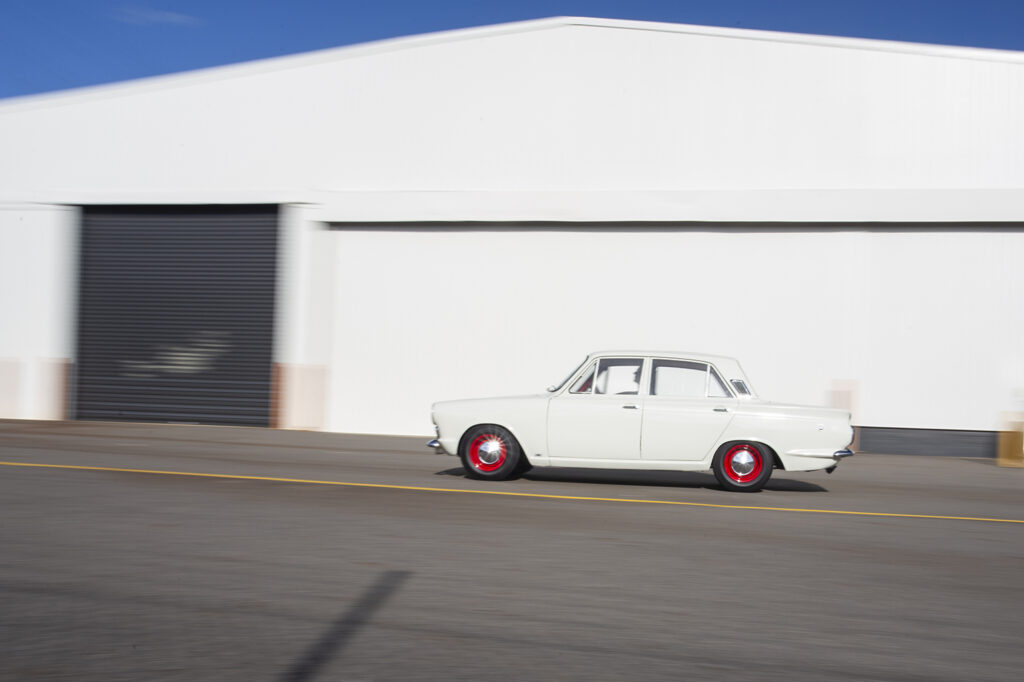
It was a bold step to incorporate the Cortina’s CHAdeMO DC fast charging capability – until recently this wasn’t really done on classic car EV conversions due to the labour and cost involved. “It was difficult to get working, but with my work background and the ever-growing network of public fast chargers it made sense,” Tim said.
Having only driven the Cortina in internal combustion guise for a few hundred metres, Tim’s first drive once the EV work was complete was a memorable event. “It was complete satisfaction after the long road of converting; it was so quiet, fast and fun,” he explained.
And he’s far from finished. Tim’s 1973 VW Kombi is at Traction EV undergoing a conversion with a 225kW Tesla rear motor and full Tesla battery pack, hopefully offering around 350-kilometres electric range. He’s also just picked up a 1949 Pontiac Fastback – it’s been sat in the California desert for decades and hasn’t run since 1985. It needs a full restoration, but will be a “patina’d lead sled electric low rider cruiser,” he promised.
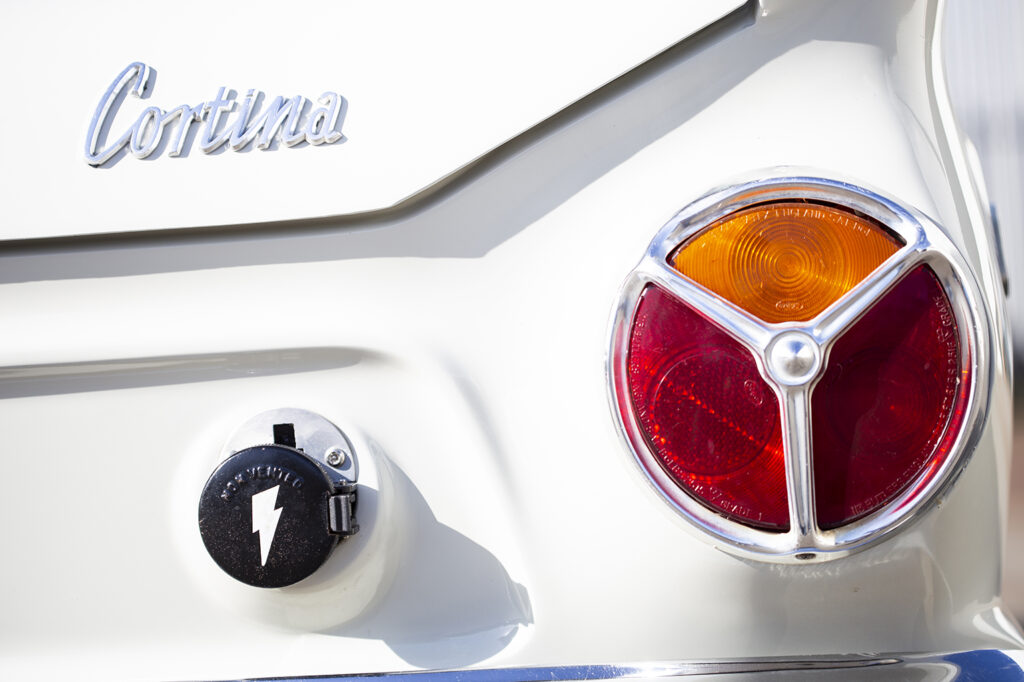
Where’s all this leading? Tim’s setting up Charged Garage – a classic electric car sharing concept. “I understand classic cars are going to become more niche and less accessible for people,” he said. “It probably won’t be realistic for many people to maintain and garage one. But if you’re like me you want the thrill of enjoying classic cars but not the hassle and maintenance that goes with it.
“Electrification takes away the reliability issues and maintenance as servicing is much simpler and easier. They’re easier to drive and you can focus on just enjoying them.”
It’s a compelling point. If an electric conversion can be done for close to the price of a classic car’s engine and drivetrain rebuild it looks a very wise investment indeed. So reliable is the technology we could even see more classics being used as daily drivers, giving even the most hard-nosed purist some cause for celebration.
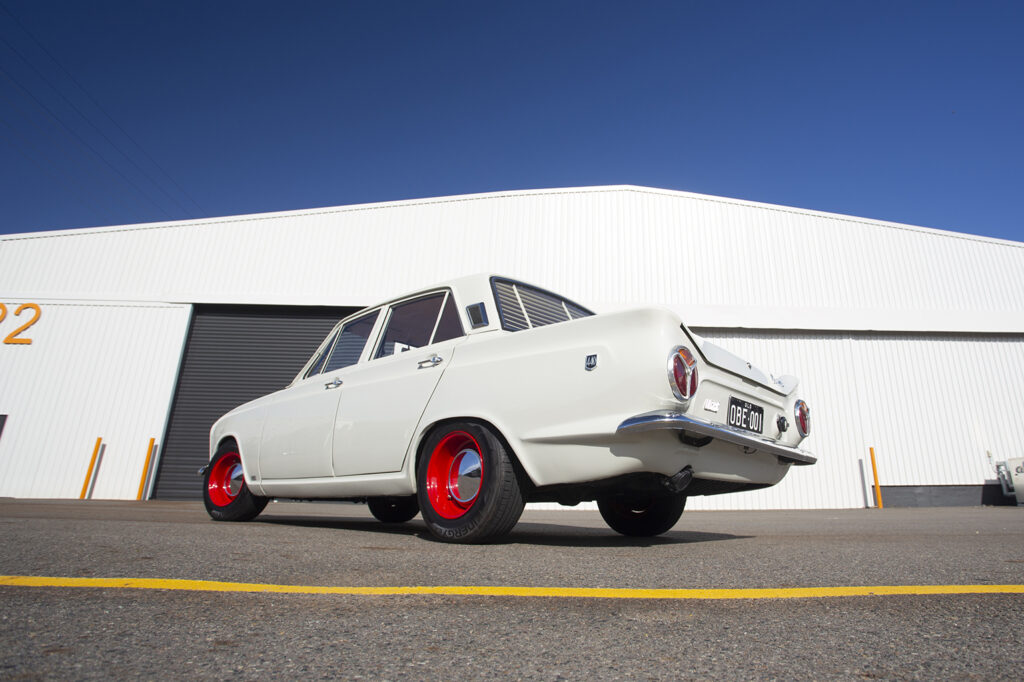
.

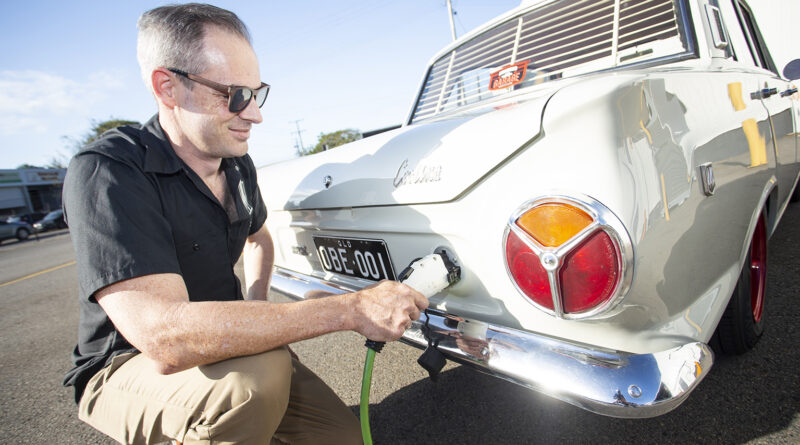
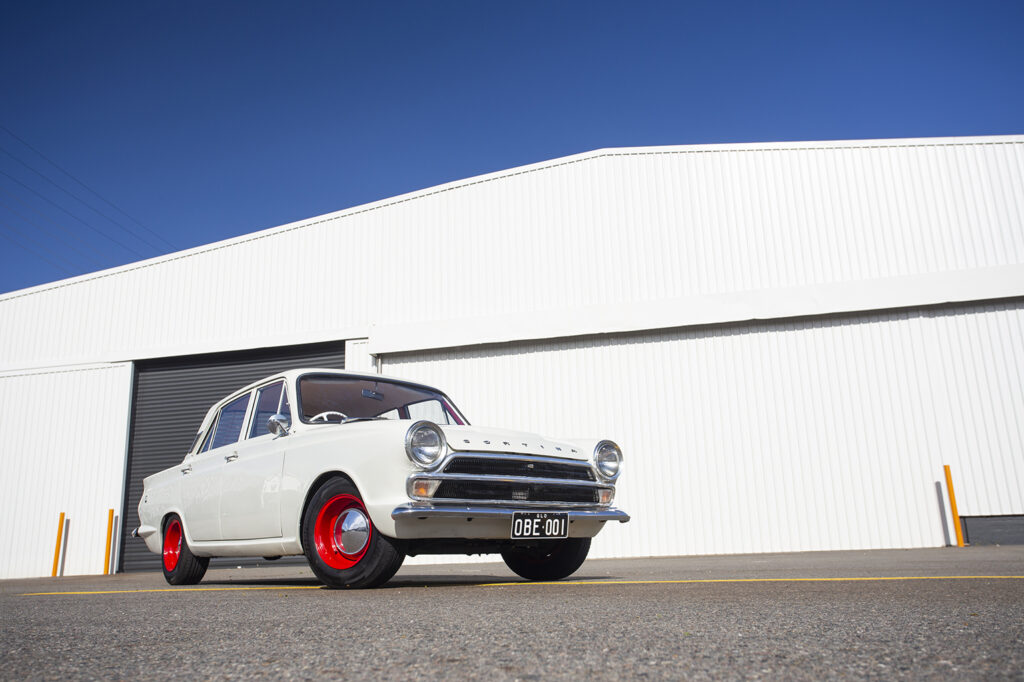
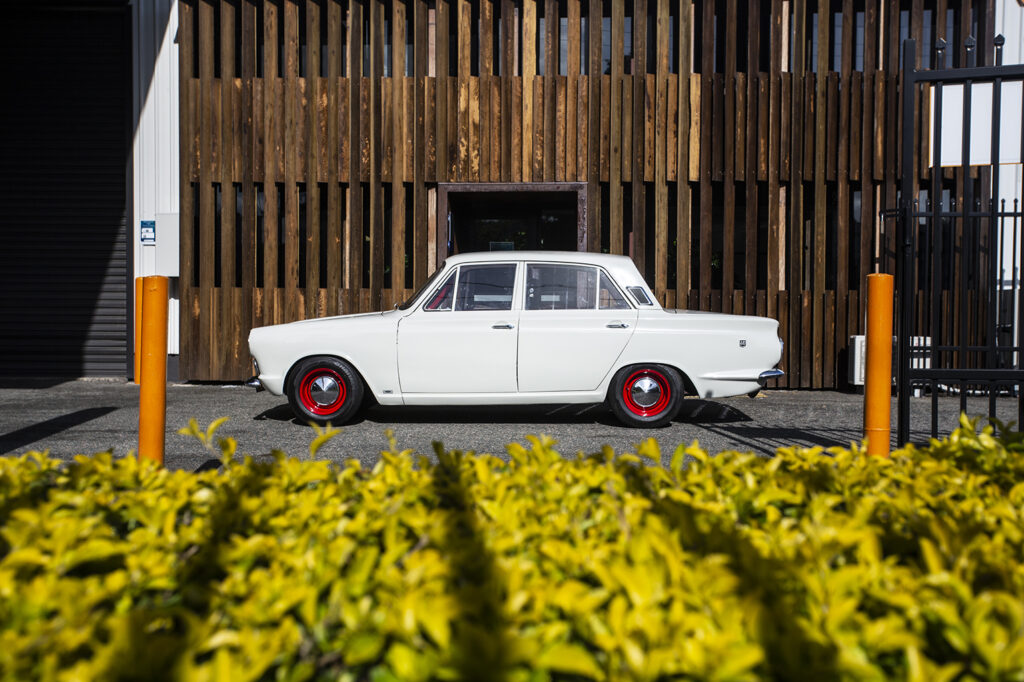
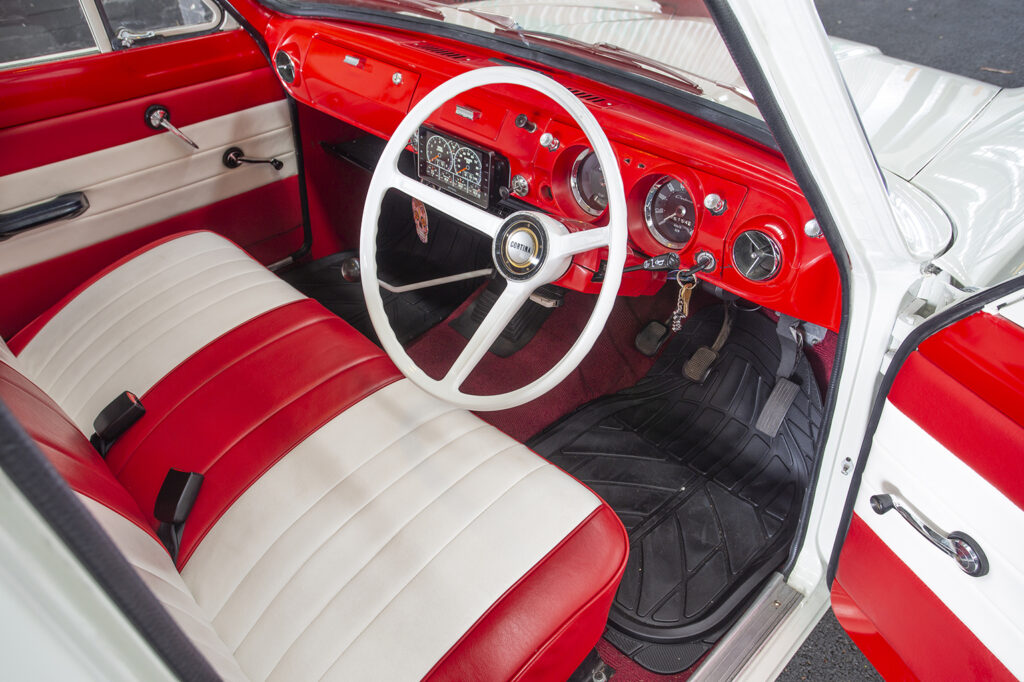
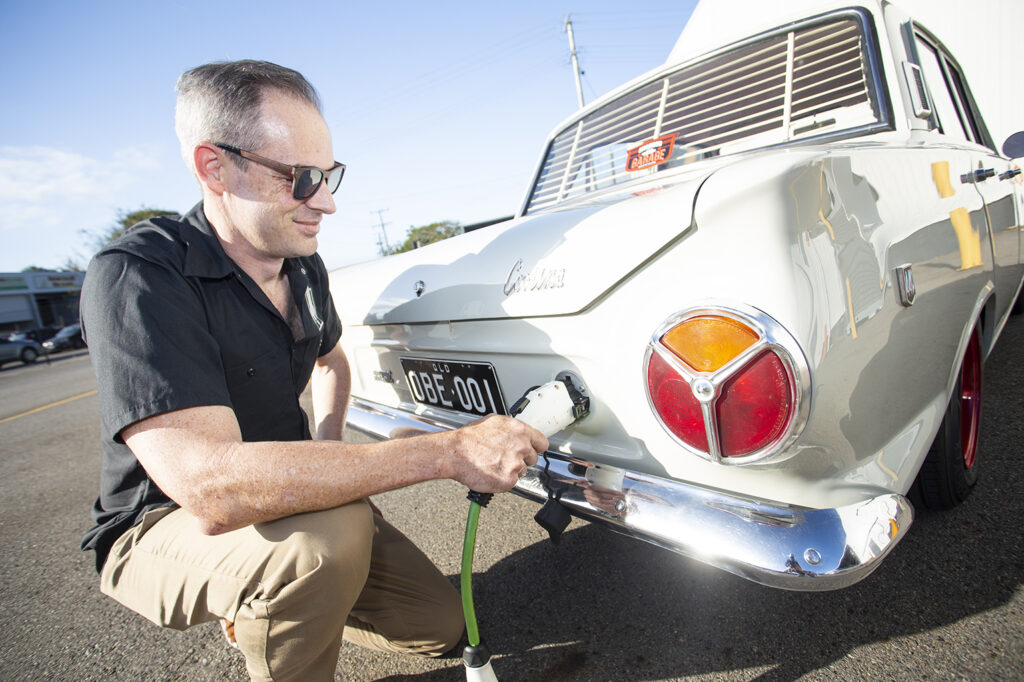
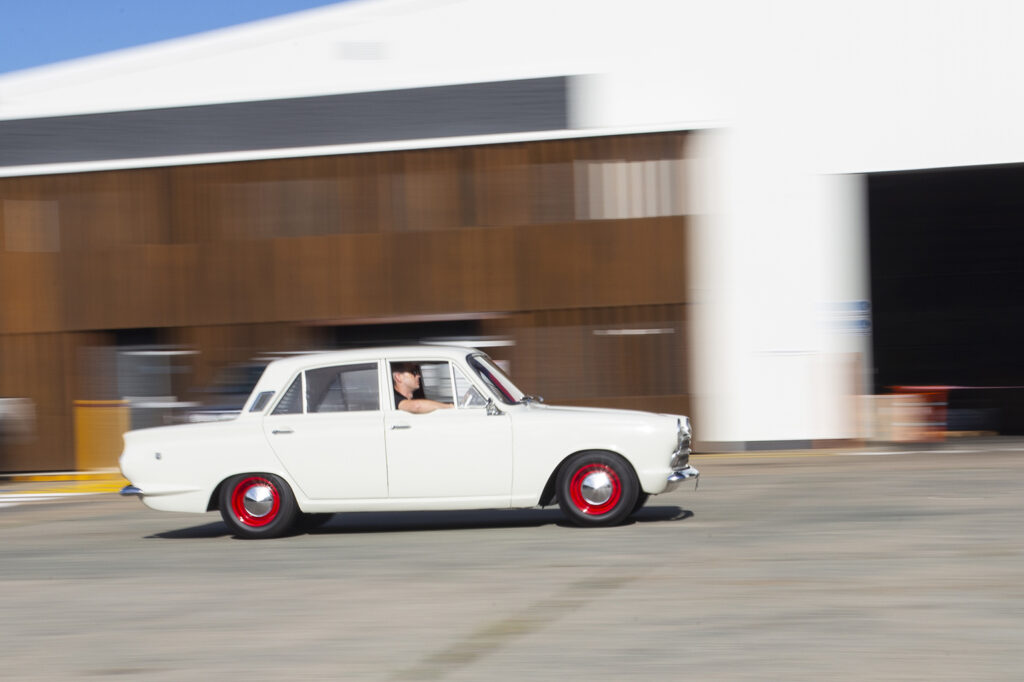
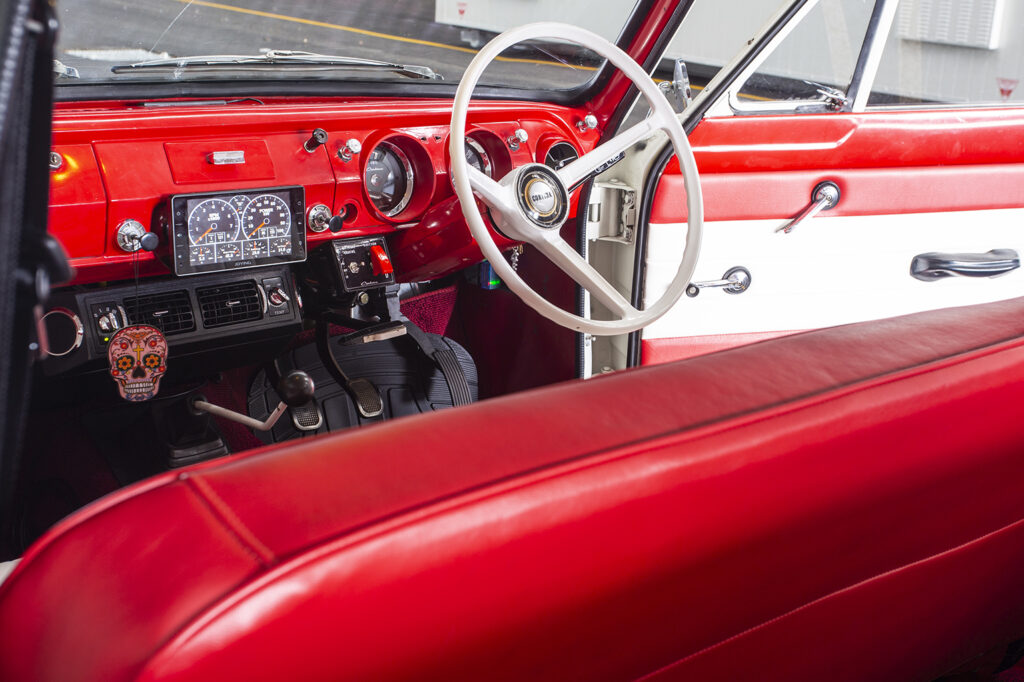
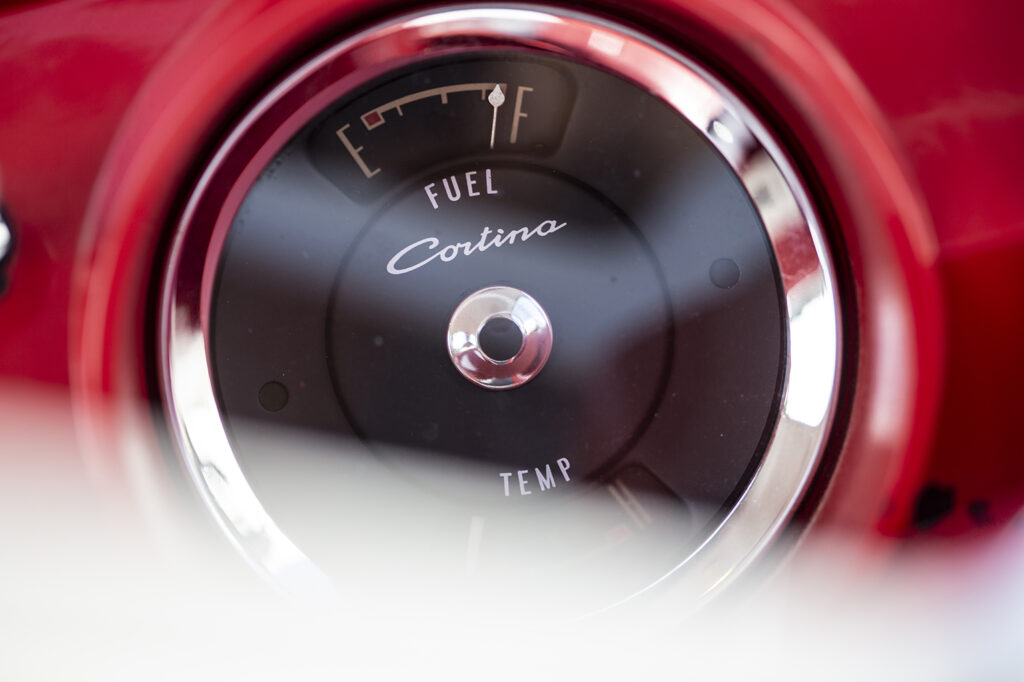
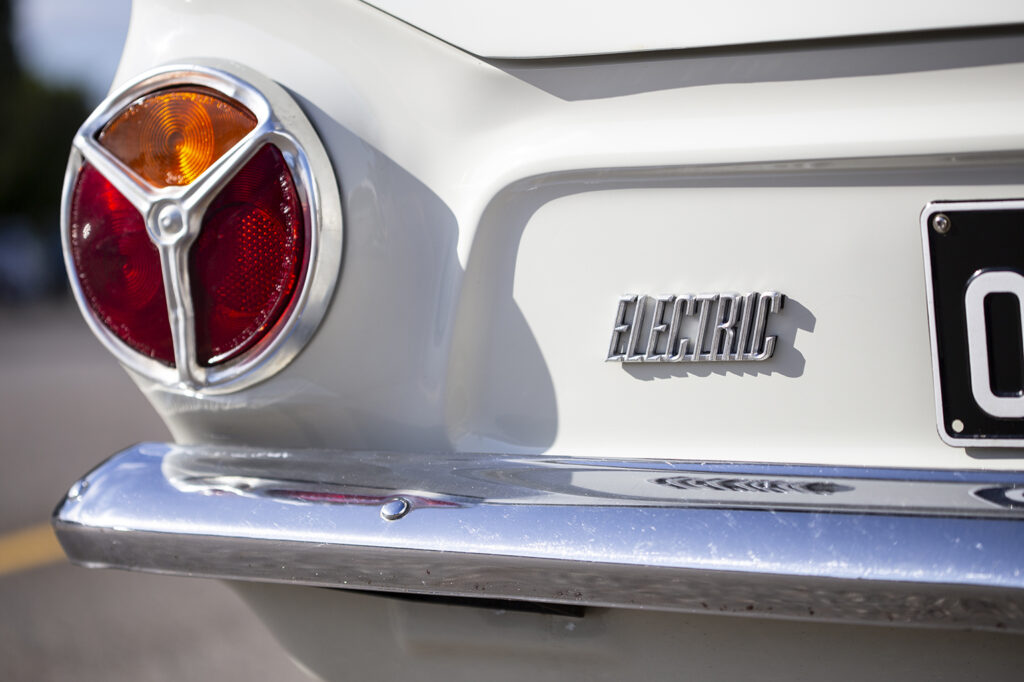
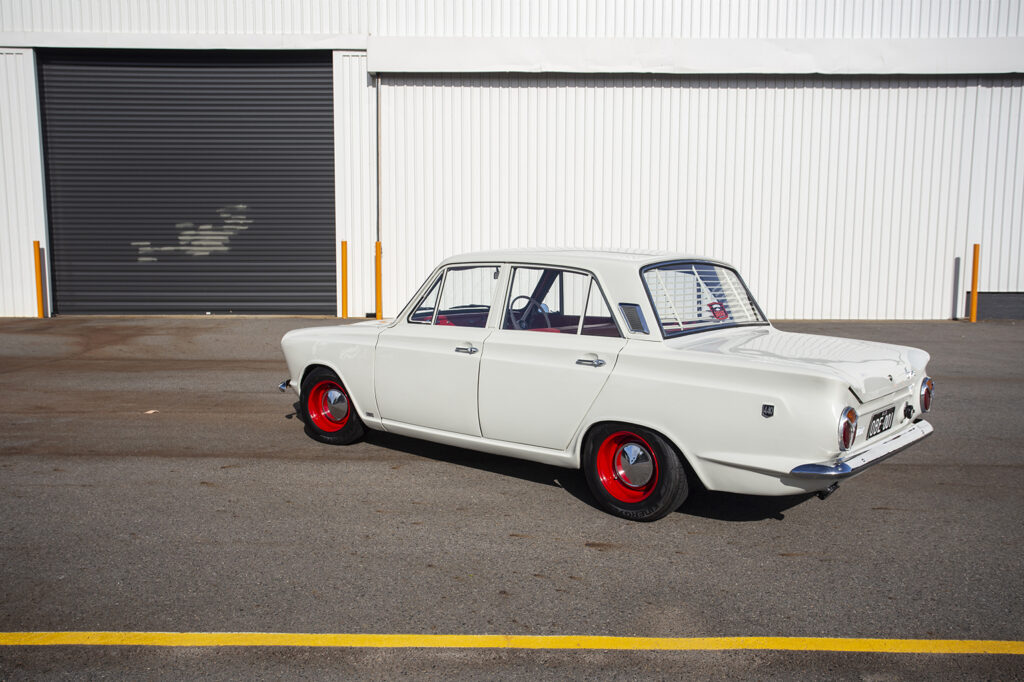
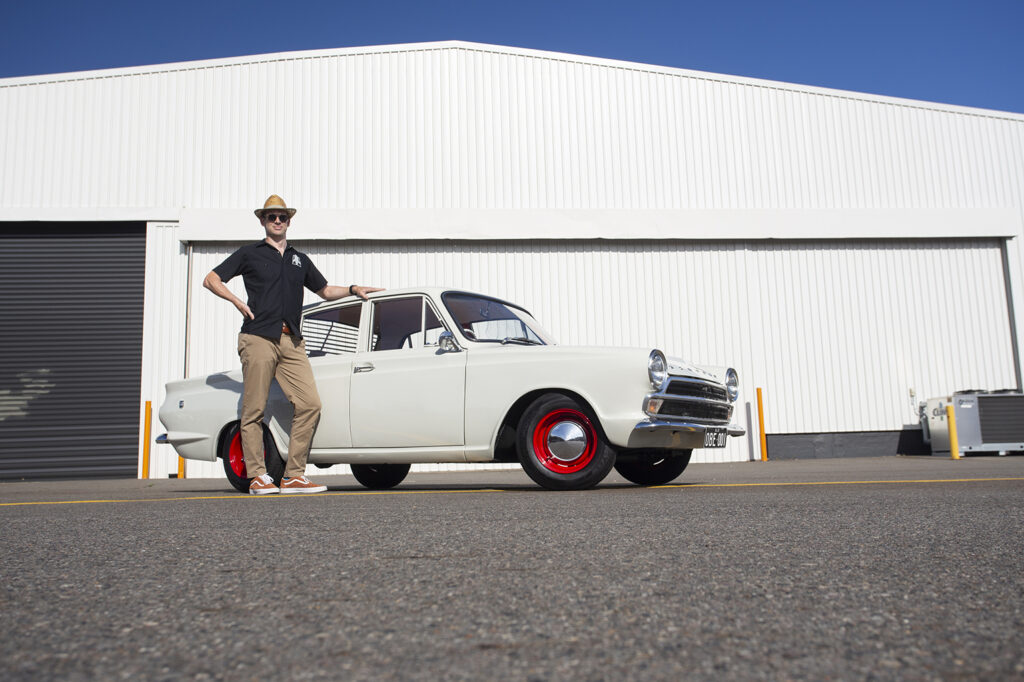
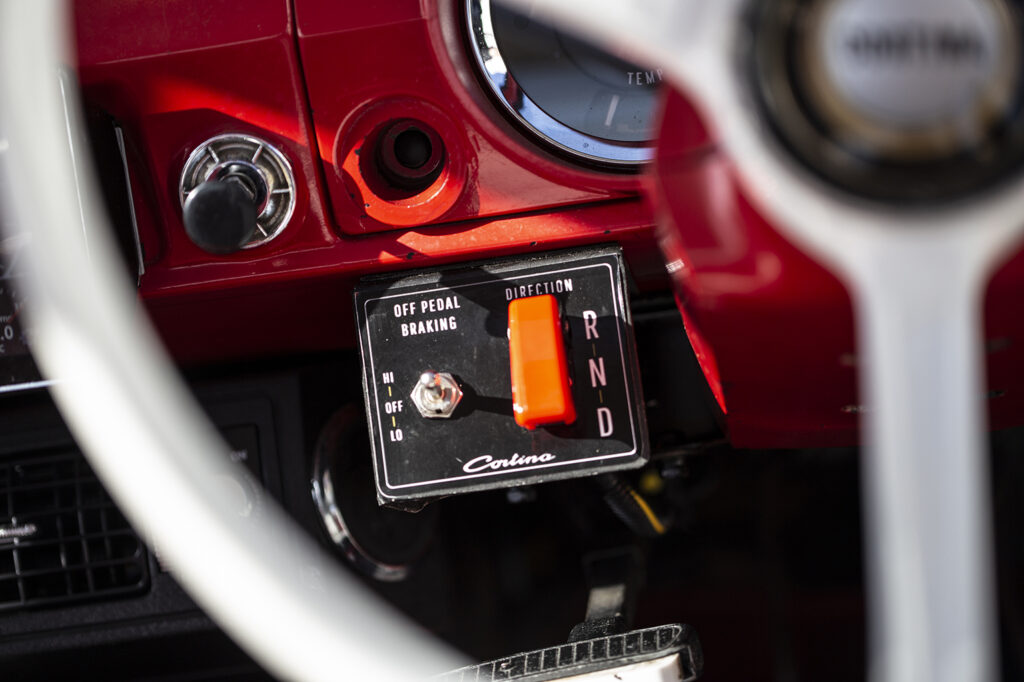
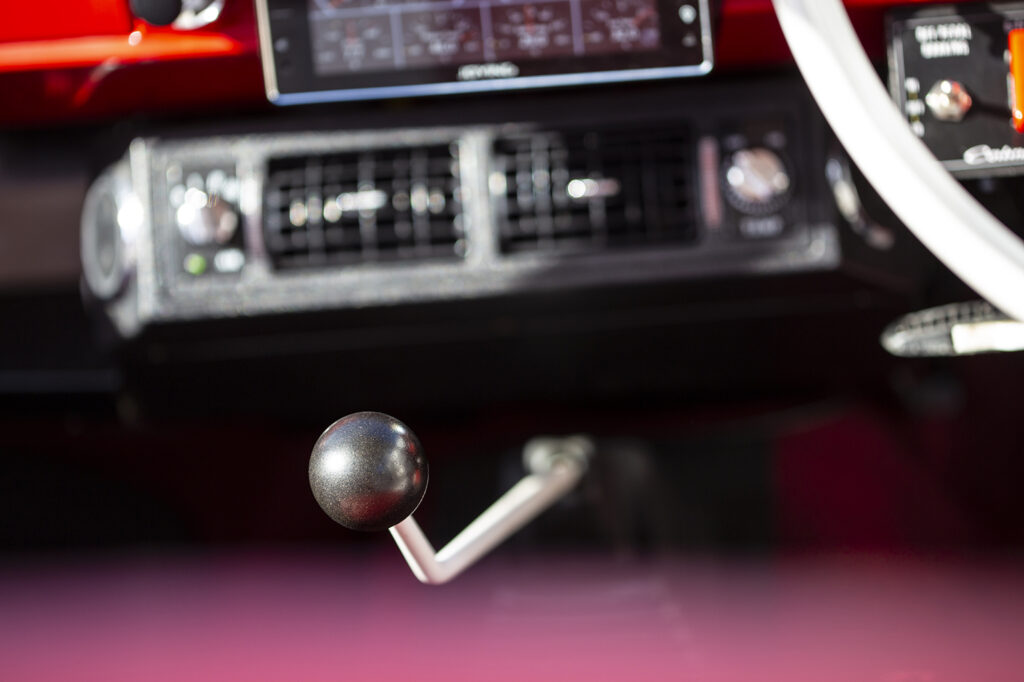
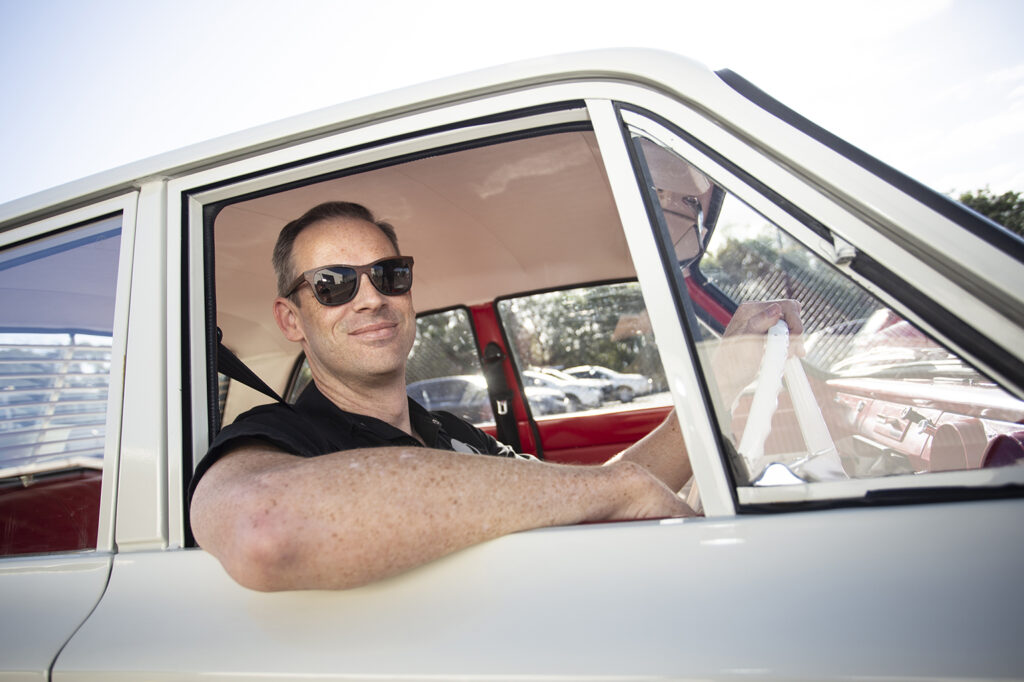

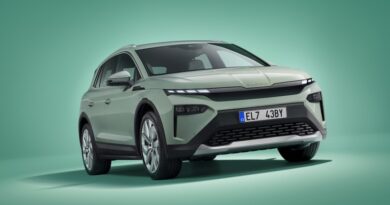
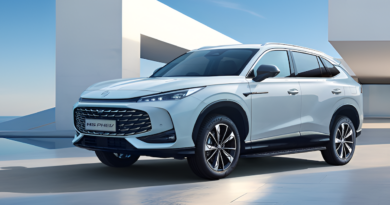

Well done Tim !
I got also a Cortina mk1 65. Makes me thinking such a conversion.
Great stuff.